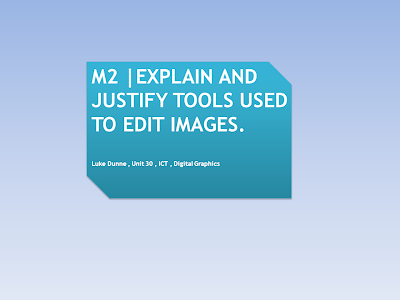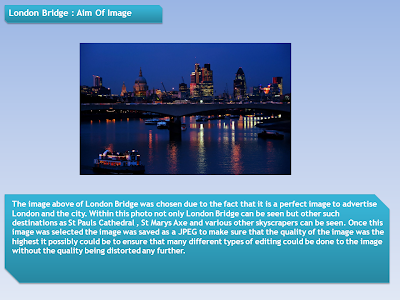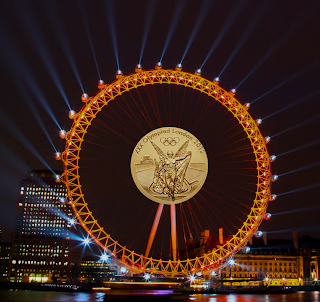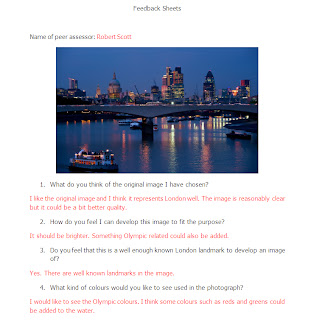Luke Dunne
Tuesday, 5 March 2013
Monday, 25 February 2013
Tuesday, 12 February 2013
Task 3
Task 3 : The legal pitfalls of using and editing graphics
1. Introduction
2. The Copyright Law
3. Gaining Copyright
4. Copyright and new media
5. Copyright within the media
6. The ownership of a copyright
7. Gaining use of copyright
8. Request of the owner
9. Royalty Free Images
10. Overall Outcome
11. Conclusion
12. Bibliography
Introduction
There are millions of images online that can prove powerful tools for us to use in such things as reports and creations. However it may not say anything on the surface but some images which are found online cannot and should not be used by anyone without permission.
The Copyright Law
The copyright law is a set of rules which are given to the owner which allow them to set grounds around something they have created. So for example an image which you may want to use online could actually be illegal or against the law to download and use against the copyright law set by the user. The right to copy, distribute and adapt the work lies in the hands of the owner if copyright law has been set.
Copyright law might be hidden in certain parts of the internet where it’s not noticeable. However most people who do set copyright law will make it noticeable where there work appears. Such people as photographers who do not want their work used anywhere apart from their own website will probably put a copyright notice on their work which is quite large and cannot be removed. This is called a watermark. There work has been watermarked to make sure that the image they have created is not used unless the permission is given. A watermark is meant to be noticeable so if a way is found to download an image and the image is used then there will still be quite a noticeable watermark getting in the way.
Gaining Copyright
To gain the copyright of an image or media you will have to apply for it through the necessary government agencies. You will need to be able to prove that the object you are trying to copyright belongs to you and that you have ownership of it in some way before a copyright is allowed of media. Once a copyright is given the necessary rights to the media will be given through the creation of the copyright. A symbol that represents copyright which is © this symbol gives people viewing the media the knowledge that the media they are looking at it copyrighted to an owner and for rights to it , a fee will probably be required.
Copyright and New Media
A copyright law is not just for images. As technologies have expanded the law has also had to change. Such things as music and electronic literacy will now have been given a copyright law. So this means that such things as using a song in the background of a video or using a quote from a piece of literature is against the copyright law. The music that you want to use may contain copyright laws from either the artist themselves or from record labels attached to the artist. With mostly everything we know find online comes a copyright.
A recent story in the news has proven that copyright can be an issue. After a recent performance at the superbowl half time show, singer Beyoncé was subject to an example of where copyright did not come in her favor. Images of the singer which were deemed by her team as unflattering were put online. Her team did not want these images online and tried to get them taken down however ownership of the images were not within her teams reach and the images are still online.
Another issue that has come up within the media is the fact than if people do not like the fact that there is a copyright then they will copy what has been done already and change it around. This was an issue when an app called Mino was accused of copying the game Tetris. The game looked and acted the same way only acted slightly different to the original. This was then taken to court for the fact that it did contains elements of which were similar to Tetris meant that the company behind Tetris were able to take Mino down.
The ownership of copyright
The rules around copyright law are deemed so that for as long as possible the owner of the media has the rights over it. For example a piece of music will still be under the copyright law even if the creator or one of the creators has died and will still be in there control until 70 calendar years after the date of their death.
Getting use of a copyright
However with some media which contains a copyright. A way can be found to allow the use of it. The gaining permission of the media can be done in certain ways. Such things start at quite a basic level such as just simply asking permission of the creator to use the work. Just a simple request will sometimes get you the permissions to use a certain piece of media which you might not have been allowed previously. Sometimes asking for permission will come with other things attached to the contract that is being set up by you and the creator. For example the first thing the creator might ask for is a fee for you using the media. This will probably be required as the creator will expect royalties from using their work and will most definitely not allow their work to go out for free with any given reason at all.
Requests of the owner
Another request the creator will probably put in is to give a full explanation of why and where you want to use their work. This is to be expected as the creator of the work will probably not want their work to be displayed in any way which is not to their satisfaction. The biggest request and most popular request when asking for copyright work is that the source you have taken the work from is attributed and stated at all times. So if there work is being used on a website then near this piece a piece of information is given to the user which tells them where this piece of work is from.
Royalty Free Images
However in some cases it maybe that an image is copyright free, this is called royalty free , what the basic and overall meaning of royalty free is , is that graphics , photographs and images can be used without having to pay any additional royalties to the owner , due to the fact they have made the image royalty free. This will therefore allow anyone the use of a certain piece of media without the worry of copyright infringement being set against the person who has decided to use the image.
Overall Outcome
A piece of media which is found online should always give you the user a notice of if a copyright is put on it. Just as the owner should give this information. The user should respect the rules set around the media which they might want to use. Copyrights are set so there is now illegal use of a piece of media in any way than what has been setup by the user.
Conclusion
To conclude, copyrights are set up for the intent purpose that the media is looked after in the correct way. There are many resources and thousands upon thousands of websites online that provide royalty free images to use. The best thing to do with an image or piece of media is to check before you use it. Otherwise legal consequences will occur
Bibliography
Friday, 8 February 2013
Sunday, 27 January 2013
Friday, 11 January 2013
Photoshop
|
Gimp
|
Pro’s Industry Standard , Works Across All Platforms , Huge number of tutorials , Easy Transfer
|
Pro’s User Friendly , Fast and Stable , Tabs For Each Photograph , Open Source , Can upload straight to Blog / YouTube
|
Con’s Uses A Lot Of Ram , Extremely High Cost , Cluttered , Sluggish , No PCX or PSP Photo Support , No support for YouTube
|
Con’s No HD Photo Support , Not Much Technical Support On Offer ,
|
Overall Rating 5/10
|
Overall Rating 7/10
|
iPad
|
Laptop
|
Pro’s Works with the Cloud , Runs On Dedicated Applications , Multi Touch User Interface
|
Pro’s
|
Con’s Works as a device with a computer , No USB , No Memory Card Slot ,
|
Con’s
|
Overall Rating
|
Overall Rating
|
Subscribe to:
Comments (Atom)


































